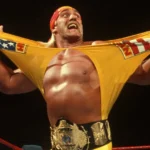Horse racing, often referred to as the sport of kings, is a symbol of prestige and intense competition. While the thrill is universal for horse racing fans, there’s no doubt that each of the biggest racecourses today has their own rich history and cultural significance.
From the aristocratic nature of the Chantilly Racecourse to the competition wrought by camaraderie that the Flemington Racecourse symbolizes, each of these racecourses has had its battles and victories that it endured. This makes them symbols of horse racing competition in their own right.
Chantilly Racecourse
The Hippodrome de Chantilly is a landmark that holds cultural significance in French equestrian history. It was inaugurated back in 1834 and holds the title of the oldest and most famous French racecourse.
The racecourse itself is part of the Chateau de Chantilly and Grandes Écuries du Prince de Condé. It has a long history that started back in the 19th Century, when Louis IV de Bourbon decided to build the Grandes Écuries, believing that after his death, he would be reincarnated as a horse. After that Henri d’Orleans, played a role in giving the property to the Institut de France, making sure of its preservation over the years.
Currently, the racecourse hosts nearly 200 races each year. These events are glamorous, offering not only a unique form of horse racing but also a sense of history, elegance, and sport.
Epsom Downs Racecourse
Epsom Downs is a racecourse in Surrey, primarily used for thoroughbred horse racing. The “Downs” part of the name refers to its location within the North Downs. It is best known for being the home of the Derby Stakes, which is the most famous and prestigious flat race in the World.
The racecourse opened back in 1661, but the formal races began way later in the 18th Century. As mentioned earlier, it’s home to the Derby Stakes, which is also commonly known as the Epsom Derby. Other major races held at this racecourse are the Coronation Cup and the Oaks Stakes.
Another thing worthy of mention is that the Derby Stakes is part of the British Triple Crown, along with the St. Leger Stakes and the 2000 Guineas. The course is known for its challenging track, which is filled with undulations, cambered sections, and the well-known Tattenham Corner, making it quite a difficult challenge for thoroughbreds.
Saratoga Racecourse
The Saratoga Racecourse is located in Saratoga Springs, New York. Its history can be traced back to the 14th Century. Around that time, many Native Americans frequently visited the area due to the appeal of its rumored healing mineral springs. Initially, it was a village, and then it evolved into a small town.
By the mid-1800s, it had grown into a town of gambling and entertainment, further fueling its expansion. And then in 1863, John Morrissey organized Saratoga’s first thoroughbred meet at the old dirt track in Union Ave, formerly known as the Horse Haven. After this first successful meet, Morrissey decided to expand further, and along with other people, he created the Saratoga Racing Association.
In 1864, the association decided to name a race after William Travers, which is simply known as the Travers. Over the years, it became known as the Travers Stakes, which is the oldest major thoroughbred race in the US. Saratoga has since become home to other prestigious horse racing competitions like the Jim Dandy Stakes, the Personal Ensign Stakes, and the Alabama Stakes.
Among these races, the Jim Dandy Stakes perhaps holds the most significance because it’s one of the key prep races for the Travers Stakes. Bettors across the US closely look into the Jim Dandy Stakes picks each year to gauge which one of them they should look out for during the Travers Stakes.
Flemington Racecourse
The racecourse had its first meet on March 3, 1840, which was hugely successful at the time. As a result, Flemington Racecourse gained popularity, and by 1861, the Melbourne Cup was launched. Fast forward a few years, and a meeting was held in a pub on Collins Street, and thus, the Victoria Racing Club (VRC) was born.
The VRC’s initial goal was simple: to make Flemington not just your typical track, but the track where the world’s finest horses would compete with each other.
The founders even managed to get the government involved, primarily by making the Melbourne Cup a public holiday. The Victoria Racing Club has been Flemington’s guiding hand throughout the years. One of their most significant moves was to merge the Victoria Turf Club and the Victoria Jockey Club, to bring the Flemington Racecourse up to international standards.
Final Words
Chantilly, Epsom, Saratoga, and Flemington each hold a special place in their country’s horse racing history. Chantilly and Epsom reflect deep-rooted European traditions, while Saratoga and Flemington are cultural and sporting landmarks in the U.S. and Australia. These racecourses represent the heart of horse racing in their nations.
Over the years, they have become home to popular horse racing competitions, and each time, these competitions lend more credibility to these racecourses, making them even more iconic. As a horse racing enthusiast, visiting these racecourses at least once in your life should be on your bucket list.



